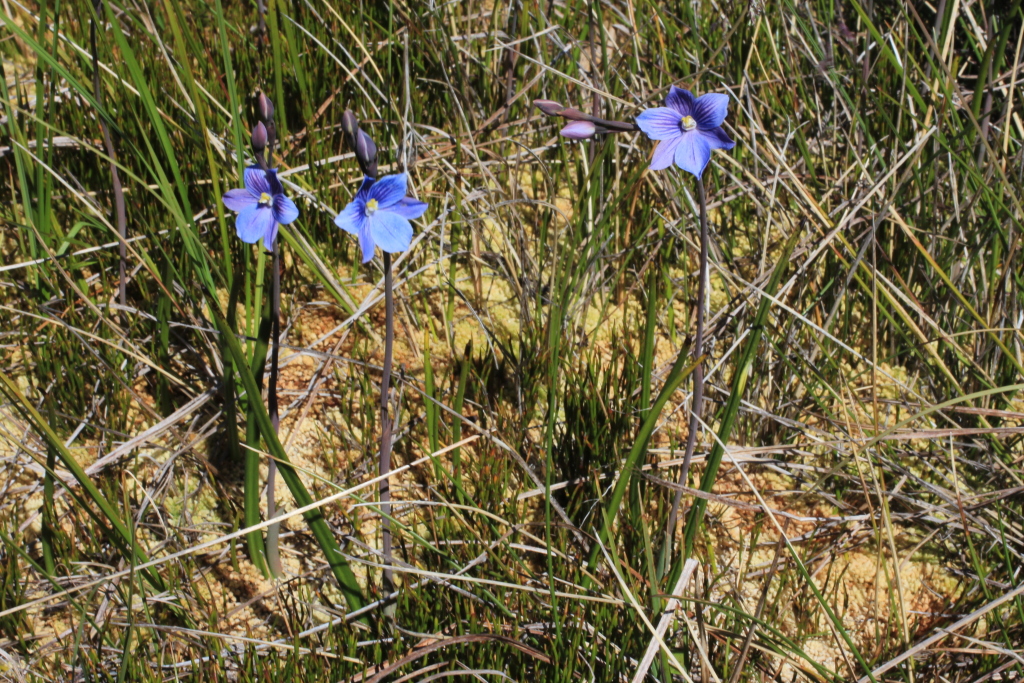Thelymitra cyanea
(Lindl.) Benth.Flowering stem erect, straight, 15–55 cm tall, 1–2.5 mm diam., pale green to purplish. Leaf linear, attenuate, 10–25(–37) cm long, 3–8 mm wide, fleshy, canaliculate, ribbed abaxially, sheathing at base, pale to dark green. Inflorescence 1–4-flowered, open. Sterile bracts usually 2, rarely 1 or 3. Perianth segments lanceolate to ovate (labellum broadly obovate), 8–16 mm long, bright blue with darker blue longitudinal veins, particularly on dorsal sepal and petals, rarely white with blue veins or pink with brown veins, opening freely on warm days. Column slender, 4–5.5 mm long, white to pale blue; mid-lobe not hooding the anther, very short, covered with beady glands, cream; lateral lobes parallel, 1.5–2.5 mm long, fleshy, obliquely erect, usually spirally twisted, yellow, base of inner margins with beady glands, apex often variously lobed. Anther inserted towards apex of column, with a prominent bifid beak. Flowers Nov.–Mar.
OtP, CVU, GGr, EGL, HSF, HNF, OtR, MonT, VAlp. Grows in moist sub-alpine herbfield, sphagnum bogs and heathland along streams and in soaks, in perennially moist substrates such as sphagnum moss, peaty soils and sandy loams. Also found in moist heathland at lower altitudes in the Grampians and Otway Ranges.
Thelymitra cyanea can be distinguished from T. alpicola and T. incurva by its broad obovate labellum and spirally twisted non-erose lateral lobes on the column.
Thelymitra cyanea has been confused with Thelymitra venosa from the New South Wales Central Coast and Central Tablelands regions, but the latter is a more robust species with a larger number of slightly larger flowers which have longer more obviously twisted lateral lobes on the column.
 Spinning
Spinning



